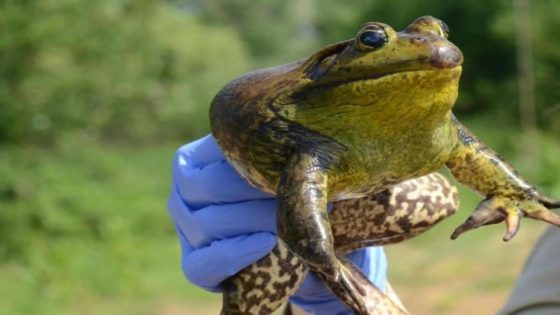In recent years, Belgium has intensified efforts to combat the invasive bullfrog species. As of April 17, 2025, over 100,000 bullfrogs have been captured in Flanders, marking a significant increase from just 32,564 in 2020. This alarming trend highlights the urgent need for community involvement in monitoring and reporting sightings.
- Bestrijd stierkikker om lokale fauna te beschermen
- Meer dan 100.000 stierkikkers gevangen in Vlaanderen
- Vraag om waarnemingen via waarnemingen.be
- Samenwerking voor duurzame bestrijding van stierkikker
- Gemeente Mol roept inwoners tot actie op
How is the Bullfrog Invasion Impacting Local Ecosystems in Belgium?
The American bullfrog poses a serious threat to Belgium’s native wildlife and plant life. This large amphibian not only preys on local species but also carries diseases that can devastate ecosystems. Here are key points regarding its impact:
- Bullfrogs outcompete native frogs for food and habitat.
- They can grow up to 20 cm and weigh over 500 grams.
- Their loud calls disrupt local biodiversity.
The ongoing LIFE project aims to sustainably manage and reduce the spread of the American bullfrog in Flanders. Residents are encouraged to report any sightings via waarnemingen.be. Together, we can protect our local ecosystems from this invasive species.





















